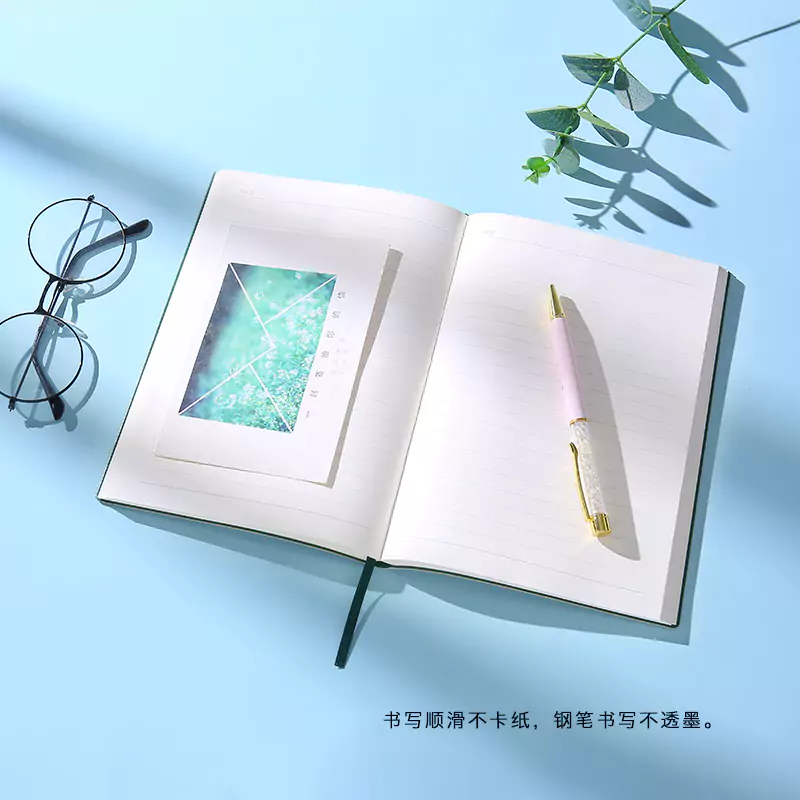The notebook manufacturing industry is highly competitive. Some companies prioritize quality and innovation, utilizing advanced production techniques and embracing sustainable practices. They offer a wide range of notebook options to cater to diverse consumer preferences and provide customization and personalization options. Strategic partnerships and collaborations drive product development and distribution while emerging markets offer growth opportunities.
Key Players in the Notebook Manufacturing Industry
Overview of Major Companies
In the world of notebook production, business competition is fierce with major companies leading the way through their innovative approaches to quality and market reach. These industry giants are well known for crafting top-notch notebooks that appeal to a range of consumer preferences. By utilizing cutting-edge manufacturing methods and upholding quality checks, they guarantee that their merchandise aligns with established industry norms.
LABON, a player in this industry since its founding in 2003 and based in Yiwu Zhenjiang Province, has focused on crafting paper notebooks professionally over the years. Their product lineup includes a variety of items like office notebooks for professionals and student notebooks for learners; they also offer diaries to cater to needs. This company's goal is to offer customers top-notch writing tools that are not only practical but also visually appealing.

Market Share and Influence
Some top companies have a reach that goes beyond their domestic markets to other countries around the world as well. They have successfully gained a market presence by establishing lasting collaborations with popular stationery brands in Europe and the United States. LABON exports its products to regions such as Europe, the Americas and Southeast Asia.
Technological Innovations in Notebook Manufacturing
Advancements in Production Techniques
The notebook manufacturing industry relies heavily on progress to stay competitive with top companies, like LABON investing significantly in cutting-edge production equipment and management systems to improve efficiency and product quality at peak performance levels ensuring they can keep pace with an ever-evolving market landscape.
Sustainable Practices and Environmental Impact
Environmental sustainability is gaining momentum in the notebook manufacturing sector as companies delve into using eco-materials and methods to minimize their ecological footprint. LABON upholds the principles of growth by proactively embracing the shift towards environmentally friendly production practices. The company's FCS and BSCI certifications attest to its dedication to stewardship.
Product Diversification and Consumer Trends
Variety of Notebook Offerings
The increasing need for a range of notebook options has prompted manufacturers to greatly broaden their selection of products available to consumers. Some companies now provide an array of notebooks designed to suit consumer preferences, such as traditional hardcover notebooks, durable softcover ones, wire-bound notebooks, journals, and even specialty gift-boxed sets. LABON produces notebooks featuring cover materials, like leather, bonded leather, cloth, and faux leather demonstrating their ability to cater to a variety of consumer needs.
Customization and Personalization Options
Personalization has emerged as a theme in the notebook sector with customers looking for bespoke items that mirror their style and preferences. Businesses, such as LABON, focus on creating stationery products, like notebooks that can feature custom logos or specific details catering to unique needs. This approach not only enriches the work environment but also elevates brand visibility by offering refined and polished stationery solutions.
LABON provides an option for individuals looking for high quality personalized notebooks to boost their business's branding or meet specialized requirements tailored to their distinct needs while enhancing both professionalism and practicality.
In summary, top notebook manufacturers are constantly improving their products with technology and adopting eco-friendly methods. They meet changing consumer demands by offering a variety of products and customization options staying ahead in this paced industry.
Strategic Partnerships and Collaborations
Collaborative Efforts within the Industry
Within the realm of the notebook production industry, partnerships and cooperative ventures play a role in driving progress and fostering creativity. These companies frequently join forces to elevate their manufacturing capacities diversify their offerings and tap into market opportunities. By working with fellow industry participants, manufacturers can make use of collective resources knowledge, and technological advancements to boost effectiveness and the standard of their products.
Collaborating in partnerships enables businesses to remain proactive in keeping up with changing consumer preferences by jointly developing products that cater to the shifting market needs. For example, collaborating companies might join forces to produce materials or original designs that resonate with environmentally aware customers. These collaborations not only foster product innovation but also bolster a company's standing in the competitive market environment.
Impact on Product Development and Distribution
The establishment of alliances plays a crucial role in shaping product development and distribution within the notebook manufacturing sector. By engaging in efforts such as joint ventures or partnerships, companies can combine their research and development capabilities producing novel products at a quicker pace and improving market reach. This cooperative strategy empowers manufacturers to release state-of-the-art goods that address a variety of consumer demands while upholding notch quality measures.
Furthermore, partnerships have the potential to improve distribution networks by granting access to markets. Through working with established distributors or retailers, manufacturers of notebooks can broaden their customer base and grow their market presence. This increased reach is especially advantageous for enterprises seeking to tap into markets or reinforce their position in current ones.
Future Prospects for Notebook Manufacturers
Emerging Markets and Growth Opportunities
The direction of the notebook production sector is being influenced by the rise of markets and chances for expansion. As the worldwide need for notebooks grows steadily high in developing areas, manufacturers stand to benefit from entering these profitable markets. Nations, in Asia, Africa, and Latin America offer prospects owing to their developing economies and rising consumer purchasing capacity.
To take advantage of these chances for growth and success in the market for notebooks, manufacturers should modify their approaches to cater to the requirements of these markets. This could include providing cost product options that align with local tastes or setting up manufacturing plants in proximity to the desired regions. By taking these steps, businesses can position themselves ahead of the competition and foster long-term development.
Challenges Facing the Industry
The notebook production sector holds promise but encounters various hurdles that need attention to sustain growth and profitability in the market landscape. A significant obstacle lies in the rising rivalry posed by substitutes like tablets and smartphones that have affected the sales of conventional notebooks adversely. To stay competitive and pertinent in this evolving environment and necessitates, manufacturers should consistently innovate through the introduction of attributes or the incorporation of technology into their merchandise.
Companies face another hurdle with the increasing expenses tied to materials and manufacturing methods. To address this problem effectively, businesses are looking into budget approaches like embracing eco-friendly practices or using substitute materials while maintaining standards of quality. LABON stands out as an example of a company dedicated to sustainability as it closely follows the industry shift towards environmentally friendly production methods.
Meeting requirements presents a significant hurdle for manufacturers as they are required to follow strict environmental guidelines and obtain certifications to implement procedures that align with these standards while also ensuring profitability.
To tackle these obstacles with planning and creativity is vital for notebook manufacturers to maintain their foothold in a constantly changing market environment while ensuring they provide top-notch products that satisfy customer demands.

